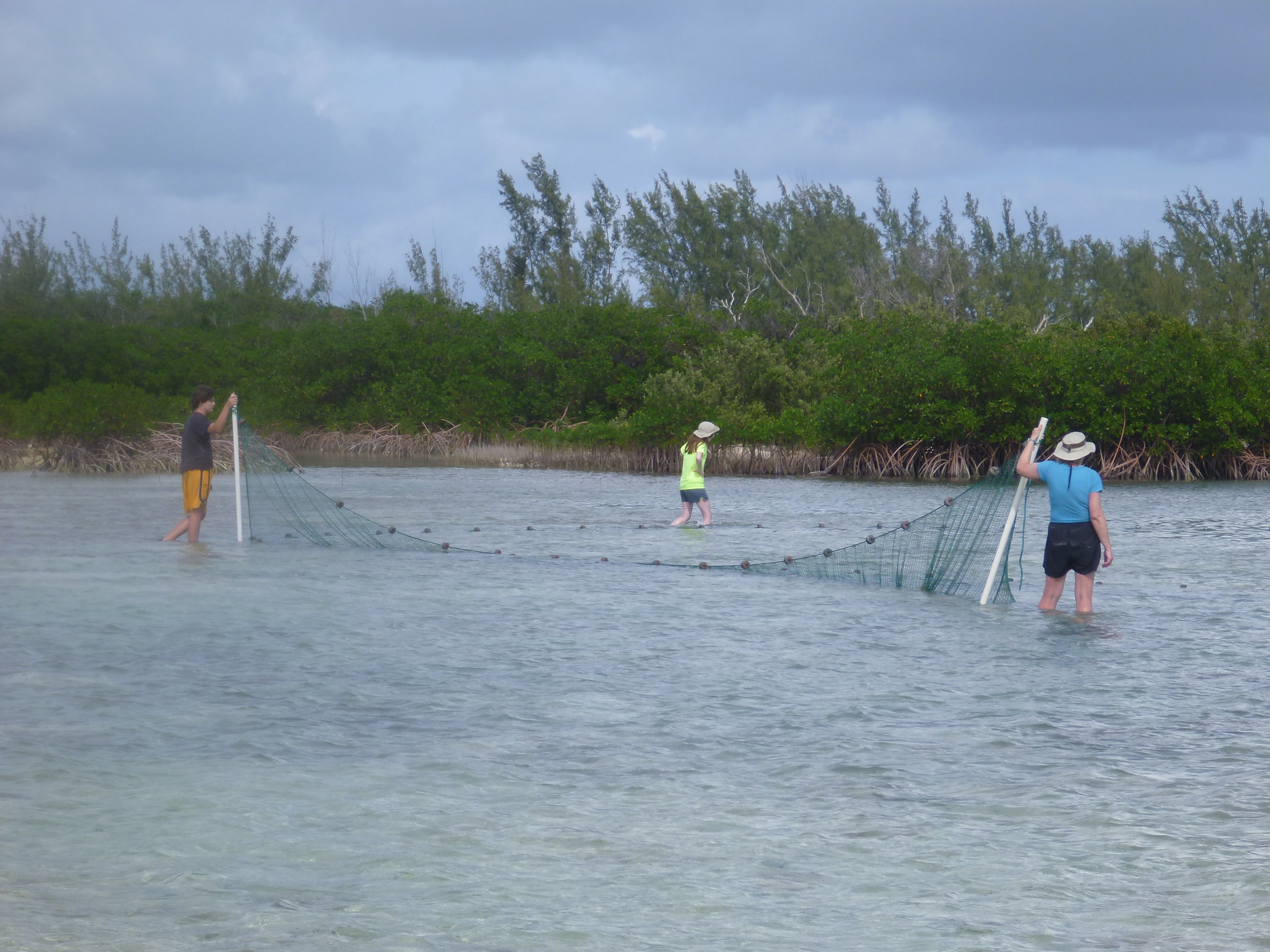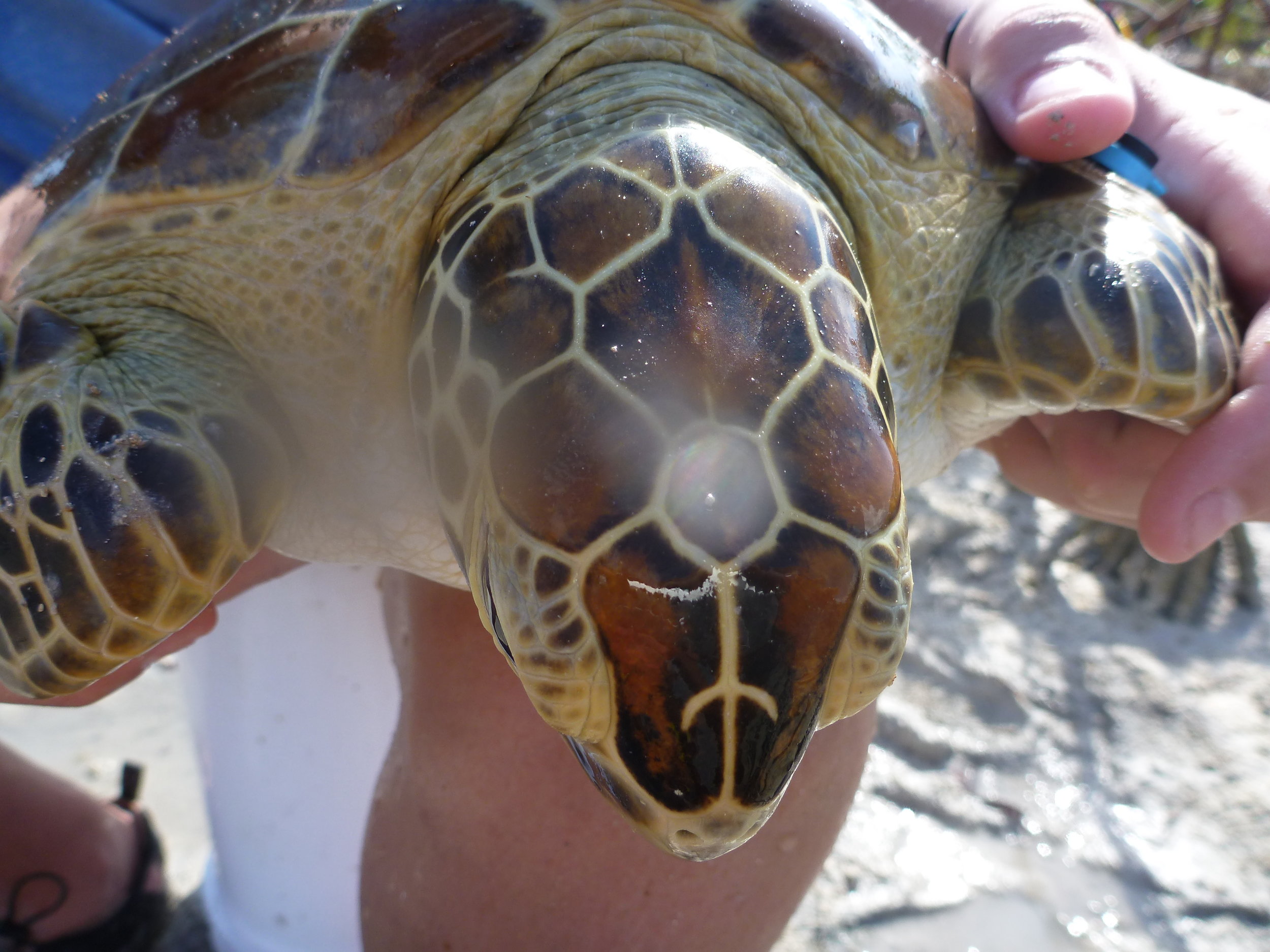Recently, students from the Maine School of Science and Mathematics (MSSM), hailing from  Limestone, Maine, spent their 2 week J-Term learning about sea turtle research and conservation at CEI.While here they learned about how the Bahamas is a unique foraging ground for juvenile green sea turtles. The students traveled to Half Sound, located northwest of the Cape, on the Atlantic side of the island. This site provides a protected habitat with a small opening to the ocean, a seemingly ideal place for juvenile green sea turtles to forage.For their research, MSSM students built on research conducted by Annabelle Brooks and The Island School Fall 2012 research group. During their field time they conducted habitat mapping and surveys of the sound- observing shoreline habitat, taking depth measurements, and noting bottom type. They also set up the first baited remote underwater video (BRUV) in the sound to capture footage of the possible predators in the sound. Boat surveys were conducted, where students did actual counts of sea turtles, and a seine net was set up in the mouth of the tidal creek, to capture and tag sea turtles. The tagging of sea turtles done at CEI is in partnership with the Archie Carr Center for Sea Turtle Research at the University of Florida, which aims to form a global database of sea turtle tagging data.
Limestone, Maine, spent their 2 week J-Term learning about sea turtle research and conservation at CEI.While here they learned about how the Bahamas is a unique foraging ground for juvenile green sea turtles. The students traveled to Half Sound, located northwest of the Cape, on the Atlantic side of the island. This site provides a protected habitat with a small opening to the ocean, a seemingly ideal place for juvenile green sea turtles to forage.For their research, MSSM students built on research conducted by Annabelle Brooks and The Island School Fall 2012 research group. During their field time they conducted habitat mapping and surveys of the sound- observing shoreline habitat, taking depth measurements, and noting bottom type. They also set up the first baited remote underwater video (BRUV) in the sound to capture footage of the possible predators in the sound. Boat surveys were conducted, where students did actual counts of sea turtles, and a seine net was set up in the mouth of the tidal creek, to capture and tag sea turtles. The tagging of sea turtles done at CEI is in partnership with the Archie Carr Center for Sea Turtle Research at the University of Florida, which aims to form a global database of sea turtle tagging data.
In their findings, they observed over 80 sea turtles in the sound, usually in mangrove or sandy/grassy areas. They also caught footage of a blacknose shark on the BRUV, providing initial evidence that predators do inhabit the sound with the turtles. Another interesting sight was an adult loggerhead and a juvenile hawksbill that were seined and tagged, along with 11 green sea turtles. Seeing 3 species in 1 day was quite a treat for MSSM!

